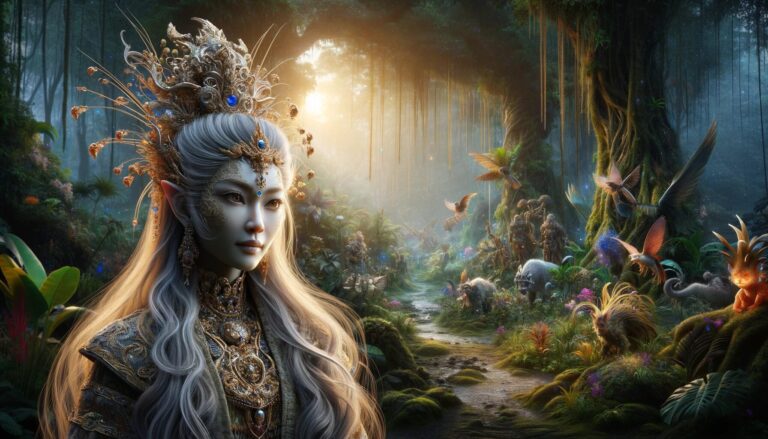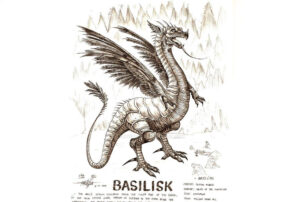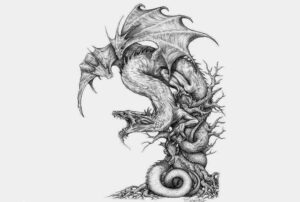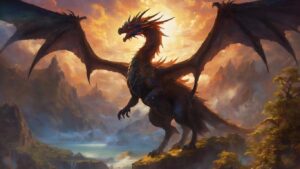Table of Contents
In the enchanting tapestry of Filipino mythology, the Diwata stand as ethereal and revered beings, embodying the essence of nature’s beauty and enchantment. Furthermore, these mythical creatures, often described as enchanting forest spirits or fairies, hold a special place in the hearts and stories of the Filipino people. As a result, this comprehensive exploration will delve into the origins, attributes, symbolism, and cultural significance of the Diwata, offering a deep understanding of their role in the rich folklore of the Philippines.
Origins and Family
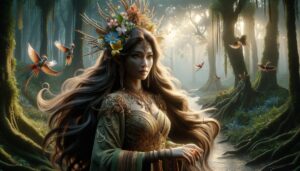
The Diwata trace their origins to the pre-colonial Philippines, where people revered them as divine beings. They often link them with Mount Makiling, a dormant volcano in Luzon, where the most famous Diwata, Maria Makiling, supposedly resides. Although their family tree remains obscured, the Diwata are believed to belong to a realm of supernatural beings that oversee the natural world.
Appearance
Diwata enchant with their alluring and graceful presence, captivating all who behold them. Furthermore, they commonly depict them as radiant women, often seen wearing traditional Filipino garments or flowing robes. Their long, flowing hair signifies their deep bond with the forests and waters, and their enchanting aura exudes an overwhelming sense of tranquility and charm.
Abilities
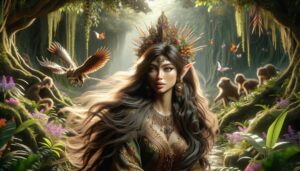
The Diwata gain renown for their captivating abilities to enchant and mesmerize. They wield the power to influence the elements, specifically wind and rain. Their songs and dances reputedly summon gentle breezes and rainfall, nurturing the land and ensuring abundant harvests. In certain stories, Diwata also serve as guides for lost travelers, leading them safely out of dense forests and treacherous terrain.
Symbols Representing Diwata
The Diwata’s primary symbol is the lush and untamed beauty of the Philippines’ forests and natural landscapes. They frequently link them with waterfalls, rivers, and ancient trees, where they act as guardians of these pristine environments. People offer flowers, especially the sampaguita, as a gesture of respect and to seek the Diwata’s blessings.
Related Myths and Stories
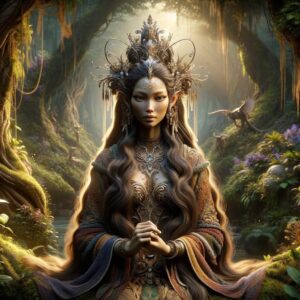
Maria Makiling:
Maria Makiling stands as perhaps the most renowned Diwata in Filipino folklore. Her story has traversed generations, and she occupies a central role in the mythological panorama of the Philippines.
Furthermore, Maria Makiling frequently takes the form of a beautiful and ethereal guardian spirit residing on Mount Makiling, a dormant volcano in Luzon. Her enchanting beauty is a hallmark, characterized by long, flowing hair that signifies her deep connection to the natural world. Those who encounter Maria Makiling are said to be captivated by her presence, as it emits an aura of tranquility and charm, leaving an indelible impression.
Themes in Her Tales
The myths and stories surrounding Maria Makiling explore various themes, including:
Benevolence and Protection: Maria Makiling consistently appears as a benevolent guardian, diligently watching over the forests and waters of Mount Makiling. She tirelessly shields the land and its inhabitants from harm, exemplifying her caring and protective nature. Additionally, her role showcases her as a guardian spirit.
Capriciousness and Elusiveness: Despite her benevolence, Maria Makiling retains a reputation for capriciousness and elusive behavior. She possesses the extraordinary ability to appear and disappear at will, fueling tales of her mysterious and enigmatic presence.
Love and Loss: Countless stories revolve around the theme of love and the poignant consequences of human actions. Maria Makiling is often intertwined with love narratives, where mortal men fall deeply in love with her, experiencing both euphoria and heartbreak in equal measure.
Nature’s Power: Maria Makiling’s close connection to nature, symbolized by her dwelling on Mount Makiling, underscores the immense power and significance of the natural world in Filipino folklore.
Consequences of Human Actions: Her tales prominently underscore the far-reaching consequences of human actions, especially when it involves interactions with supernatural beings like Maria Makiling. These narratives function as cautionary tales, conveying the importance of respecting and preserving the environment for the well-being of both humans and the supernatural entities that inhabit it.
Cultural Impact

Furthermore, the Diwata continue to hold a significant place in Filipino culture and beliefs. Their connection to the natural world emphasizes the importance of environmental conservation and harmony with nature. Additionally, festivals and rituals are held in their honor, reflecting the deep respect and reverence Filipinos have for these mythical beings.
Thematic Exploration
The Diwata symbolize the delicate balance between the human and natural worlds. Their abilities to influence the elements and protect the environment reinforce the idea that humans are stewards of the land, entrusted with the responsibility of preserving its beauty and resources. The Diwata also embody the enduring connection between Filipinos and their ancestral heritage, preserving the stories and traditions of their ancestors.
Conclusion

The Diwata, these enchanting forest spirits and fairies of Filipino folklore, represent the enduring bond between the people of the Philippines and the natural world. Their ethereal beauty, mystical abilities, and protective presence serve as a reminder of the enchantment that can be found in the heart of nature. As symbols of reverence and guardianship, the Diwata continue to inspire respect for the environment and a deep connection to the rich cultural heritage of the Philippines.
FAQ
What are the origins of the Diwata?
The origins of the Diwata trace back to pre-colonial Philippines, where they were revered as divine beings.
What is the significance of Mount Makiling in Diwata mythology?
Mount Makiling is associated with the most famous Diwata, Maria Makiling, who is believed to reside there.
What powers do the Diwata possess?
Diwata are known for their ability to influence elements like wind and rain and their enchanting songs and dances.
How do the Diwata impact Filipino culture?
The Diwata emphasize environmental conservation, inspire festivals, and preserve cultural heritage in the Philippines.
